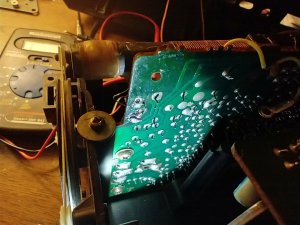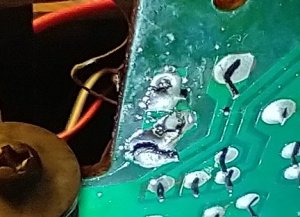Great to read your accumulated wisdom. I'm drooling over that Sencore - the last piece of kit i need is looking something like that. That book you linked to has been snapped up already damn..
I've got a few books on this subject. Pretty hard going when it gets to fm detectors and suchlike. My best buy so far has been some radio course books from the ICS correspondence schools circa 1978/80. They're so good i might scan them and put them up as a file here.
I don't have decades of experience, but it seems to me that for every old radio i've come across the station is never where it's meant to be on the dial! So i'm theorizing that when it comes to 'trim' components the top ones to go out would be trimpots (makes sense with wiper contact points degrading), followed by trimcaps (as just proven above), and then IF transformers (can't really see how these can drift considering their construction).
I'm with you in that i'm not into random tweaking. I've probably given the wrong impression though. So looking at the circuit again, i don't claim to follow everything, but i guess (AM) transistors Q301 & 302 are up for voltage checks, and diodes D105, 301 & 304 can have a diode checker on them. That's something a beginner can do with a multimeter before throwing in the towel. And touch up any dead looking solder joints with more solder.
I've got a few books on this subject. Pretty hard going when it gets to fm detectors and suchlike. My best buy so far has been some radio course books from the ICS correspondence schools circa 1978/80. They're so good i might scan them and put them up as a file here.

I don't have decades of experience, but it seems to me that for every old radio i've come across the station is never where it's meant to be on the dial! So i'm theorizing that when it comes to 'trim' components the top ones to go out would be trimpots (makes sense with wiper contact points degrading), followed by trimcaps (as just proven above), and then IF transformers (can't really see how these can drift considering their construction).
I'm with you in that i'm not into random tweaking. I've probably given the wrong impression though. So looking at the circuit again, i don't claim to follow everything, but i guess (AM) transistors Q301 & 302 are up for voltage checks, and diodes D105, 301 & 304 can have a diode checker on them. That's something a beginner can do with a multimeter before throwing in the towel. And touch up any dead looking solder joints with more solder.





